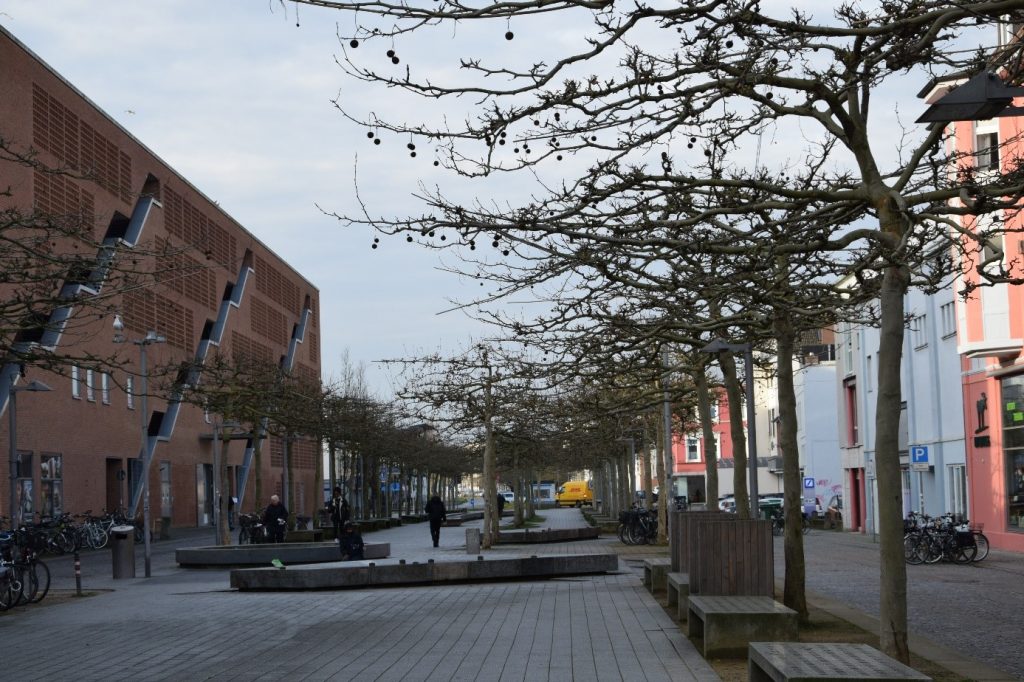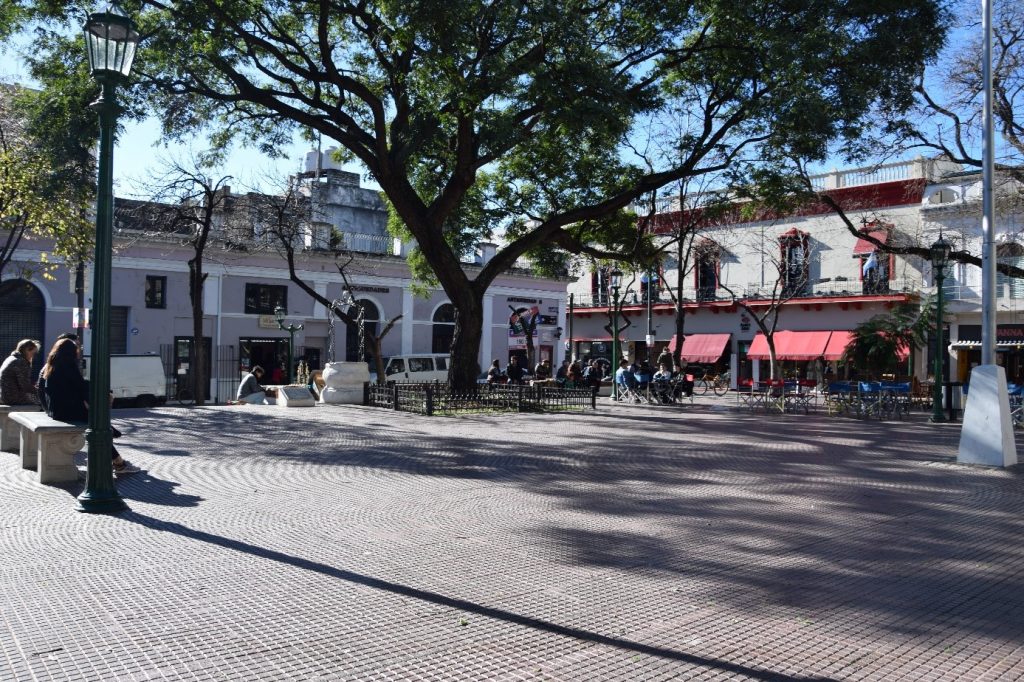The trees in cities were planted already in ancient times, when they became an important element of urban development. They were appreciated for the shade they created, which gave the inhabitants a respite during hot days. Trees were also placed along the road line to protect travelers from sun, wind and snow, they were an element identifying a given area and a navigation element for travelers.
Today, urban trees are an important part of the urban environment, contribute to regulating urban temperatures and reducing the urban heat island. Their important role is to create a shadow in the city. As many studies show, the shadow produced by the tree reduces the ambient temperature much more than the shadow created by buildings or roofs. The crown of trees is a multi-layered structure, which at all levels is a barrier to solar radiation, and also a barrier that traps heat. Trees reduce solar radiation by 90%. The cooling of the air is also the result of the evaporation of water by the leaf blade.
Note: At 32 °C air temperature, the temperature of air:
– under a tree it will be 28 °C.
– above asphalt 52 °C.
– above concrete 43 °C.
Therefore, the diameter of the crown of the tree is important and how much of the ground surface it covers. The optimum coverage of the urban space of the tree crowns should be 40%.
The costs of planting and maintaining trees are much lower than the benefits of their presence. (To learn more about the economic benefits of maintaining trees, use the i-tree software https://www.itreetools.org/ software)
Environmental benefits: Reduction of the urban heat island (reduction of air temperature), air purification (from particulate and gaseous pollutants), water purification, water retention, reduction of water flow to sewage system, noise suppression, increased biodiversity, creation of new habitats.
Social benefits: Positive influence on the mental and physical health of local communities, improvement of the esthetics of the place.
Economic benefits: Energy savings, reduced air temperature, reduced need for air conditioning, trees also increase the value of space, fruit farming.
A solution for professionals and local communities.
It is important to select tree species appropriately so that the tree can grow properly for many years and does not prevent the space from functioning. Trees in the city can grow to several dozen meters in height and width, the trunk itself can be several meters in circumference. The table below presents the criteria that should be followed when choosing the right tree species to be planted in a given place.
Criteria for the selection of the relevant tree species.
| Environmental conditions in the given space. | Latitude (climate in a given area), light availability, soil type, water availability (surplus or drought), frost, soil salinity |
| Existing spatial considerations | The type of surface to be covered, the proximity of the building foundations, underground and ground infrastructure |
| Characteristics of the tree structure | Not every tree species works well in urban areas, e.g. in squares or along communication routes (e.g. they are too high, too short, with too wide a crown or too extensive root system, etc.) |
| Safety criterion | Trees planted in cities must be resistant to fractures, breaking (under the influence of storms and winds), as well as the underground infrastructure and building foundations should be properly secured (with anti-root barriers). |
| A negative impact on the given space | Some trees have toxic leaves, fruits, etc. which may pose risks to e.g. children, have an unpleasant smell e.g. during flowering, excessively “litter” (shedding bark, leaves, fruit difficult to clean up) |
| Maintenance costs | It is worth choosing species that require minimal maintenance and care costs, where there is no need for additional care such as spraying or periodic trimming.
Important!: During long periods of drought, the trees should be watered. This is especially true for young trees. |
| Esthetic aspects | Space creation, impact on the value of the property |
| Historical aspects | Continuation of historical planting |
| Environmental | The value of ecosystem services |
| Socio-economic aspects | Increase in social value and land value |
A table made by Agnieszka Dudzińska – Jarmolinska based on: Dover J., 2015, Green infrastructure. Incorporating plants and enhancing biodiversity in buildings and urban environments, Routledge, New York
A young tree needs two human generations to develop in order to achieve the optimum size and efficiency of ecosystem services. The most popular trees planted in central Europe are: (Acer, Aesculus, Plantanus, Tilia). It is important to plant a variety of tree species in cities, increasing their diversity.
If we do not know what tree species should be planted by us, we can use municipal documents, where “standards for shaping green areas” are specified, e.g. for Warsaw, see the link:
Examples of tree plantings in cities that effectively shade public spaces:
An example from Wilhelmshaven, Germany.
This small town square is located on the back of the local shopping center. It has been planted with specially formed (Platanus), which in the summer creates a compact green dome that gives a shadow to the square users.

Example: Wola District, Warsaw
This small square is located on Prosta Street, at the Rondo ONZ metro stop. Passers-by willingly hide from the sun in its shade. The photo shows young people hiding from the sun, just before the start of the “youth climate strike” manifestation.

Example: Buenos Aires
An example of a small city square in San Telmo, almost completely shaded by the trees growing in the square. The photo was taken in winter, the amount of shade in this space will increase significantly after the rest of the trees in the square are greened.

Trees must take many years to grow to full size. Nowadays, it is more and more often possible to create solutions alternative to trees that can replace them until the tree we plant reaches its full size and optimal crown diameter.
Such solutions can be the creation of “shaders”. At wooden or metal structures, we plant creepers that will quickly create a space sheltered from the sun. An example of such a solution can be the project from Madrid:
https://www.archdaily.com/6303/eco-boulevard-in-vallecas-ecosistema-urbano
A more futuristic and more expensive solution will be to create structures of “trees” filled with algae. Such projects are created, for example, by ecoLogicStudio:
https://www.youtube.com/watch?v=U3u0FMZpQnk
https://www.ecologicstudio.com/projects/urban-algae-folly-2-0
Another technological solution will be the use of the so-called “city tree”.
References
Szczepanowska H., Sitarski M., 2015, Drzewa zielony kapitał miast. Jak zwiększyć efektywność pracy drzew?, Instytut Gospodarki Przestrzennej, Warszawa
Dover J., 2015, Green infrastructure. Incorporating plants and enhancing biodiversity in buildings and urban environments, Routledge, New York
